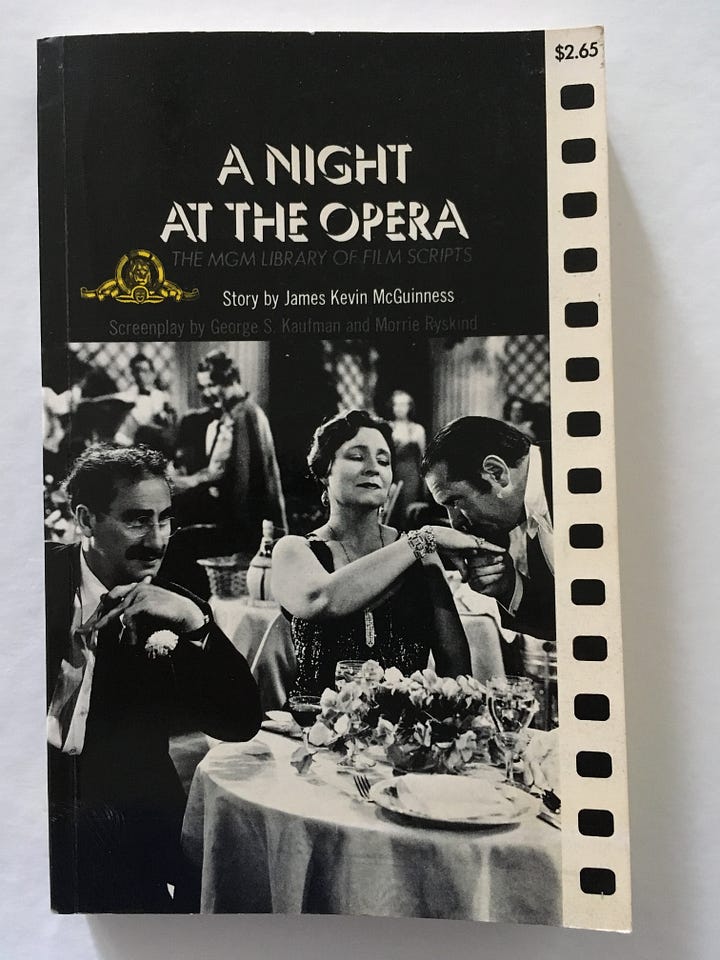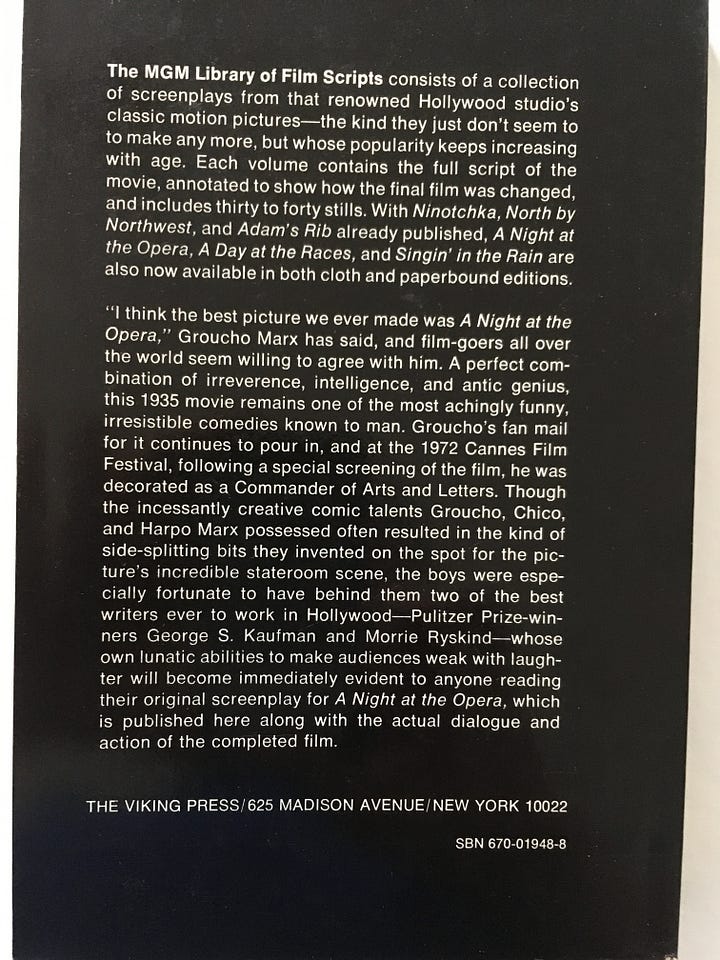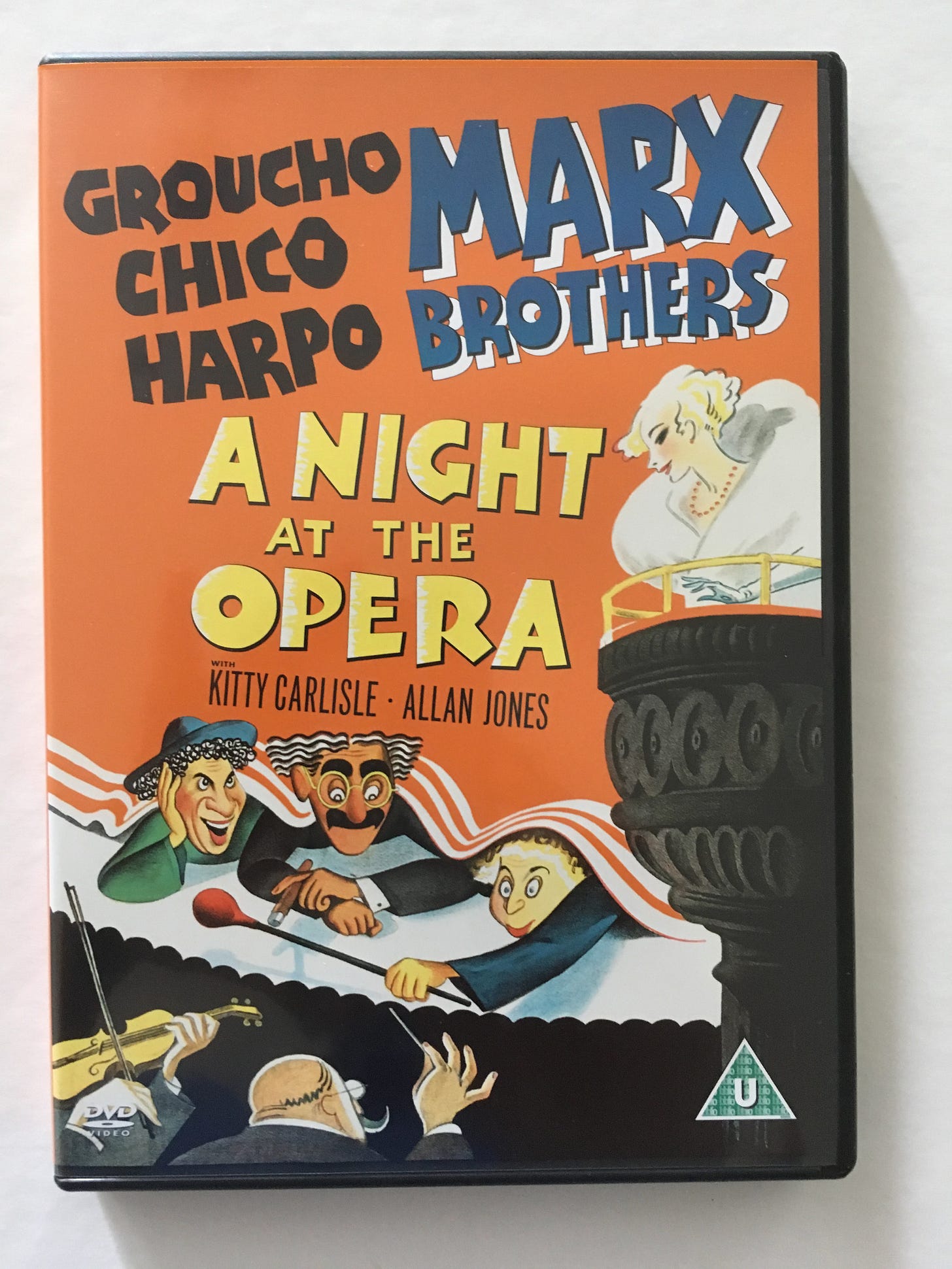Revisiting Rewatchables, week 24: “A Night at the Opera”
Have you ever watched children toppling a tower of building blocks they had just finished constructing and then laughing gleefully at the destruction they have wrought? There is something liberating about this, and as grown-ups we almost get envious. Maybe that is why disaster movies are so popular, because they show destruction on a grand scale. But of course, as grown-ups we know that destruction comes with a heavy price, something that children don’t think about when they topple their towers. They just relish the chaos.
Chaos can be life-affirming, strangely enough, and now and then we like to get a helping of mayhem. Welcome to the Marx Brothers. If you want chaos and laughter, the Marx brothers are a safe bet. Their previous films were more anarchic and unapologetic. “A Night at the Opera” is the film where they allowed themselves to be tamed (at least that’s one way of telling the story). It is almost perfect, very funny, a favourite of mine, and according to Groucho Marx “the best film we ever made.”


Comedy looks easy but it is hard work. What seems like an improvised string of stream of consciousness nonsense was a script carefully honed well in advance of filming. The brothers performed live shows of several scenes and the writers checked the reaction of the audience and changed the script before the scenes were filmed. Filming itself wasn't a walk in the park either because the brothers didn't get along with the director, but you never notice the difficulties. Everything seems effortless, from quips and gags to the musical numbers (Chico at the piano, Harpo at the Harp) and the physical comedy (mostly anything Harpo does). The brothers wouldn't be half as funny if they didn't have hapless foils for their antics, and Margaret Dumont, Sig Ruman and Walter Woolf King fume and rail valiantly and impotently against the force of nature called Marx.
So, what is it all about? It is all about opera, as the title suggests. Think of it as a stew in a big cauldron. The ingredients are: two young singers, an unpleasant tenor, a pompous opera director, a rich widow who wants to buy herself a place in society, an ocean liner, three famous aviators with long beards, a clueless detective accompanied by lots of policemen, the music of Giuseppe Verdi and of course the secret sauce: the Marx Brothers themselves, and three hard-boiled eggs. Put the cauldron on a stage, have a chorus sing to it and watch it boil over. Et voilà, you have the plot of this comedy.
The film is famous for a number of scenes. In one we get to witness the destruction, literally, of a long contract. Bit by bit it is reduced until only one last clause remains, the sanity clause, but even that is tossed aside because “There ain’t no Sanity Clause.”
Another highlight is the stateroom scene. In it we watch how Groucho’s tiny cabin on the ocean liner is filled with more and more people until the little room bursts at the seams and everybody is spilled out on to the corridor. Then comes a scene at a hotel where Groucho’s character (Otis B. Driftwood) harbours three stowaways whom Henderson, the detective, is looking for. That scene starts with verbal sparring and then moves on to more and more absurdity until it stops in bizarre fashion:
Henderson: You live here all alone?
Otis B. Driftwood: Yes. Just me and my memories. I'm practically a hermit.
Henderson: Oh, a hermit. I notice the table's set for four.
Otis B. Driftwood: That's nothing. My alarm clock is set for eight. That doesn't prove a thing.Henderson: The last time I was in this room there were four beds here.
Otis B. Driftwood: Please, I'm not interested in your private life, am I?Henderson: Am I crazy or are there only two beds here?
Otis B. Driftwood: Now which question do you want me to answer first, Henderson?
Henderson: Ohhh! Ah! Say … how did these two beds get together?
Otis B. Driftwood: Well, you know how these things are. They breed like rabbits.
The film ends with a grand finale at the opera, where the Marx Brothers more or less demolish the set of “Il Trovatore”. This is destruction on a big scale, with Harpo swinging and climbing around in the rafters while policemen chase him and the others. It is very funny and delivers the type of joyful chaos I talked about at the beginning.
One thing the brothers don’t try to destroy is the music, even though they at one point play baseball with a violin. Harpo and Chico were accomplished musicians themselves, and although they have fun with the music, they take it seriously. The music soars while backdrops rip apart, and it all ends with a beautiful duet performed by the two young singers.
If you don’t believe me, go watch it yourself, and always remember: “There ain't no Sanity Claus!”


